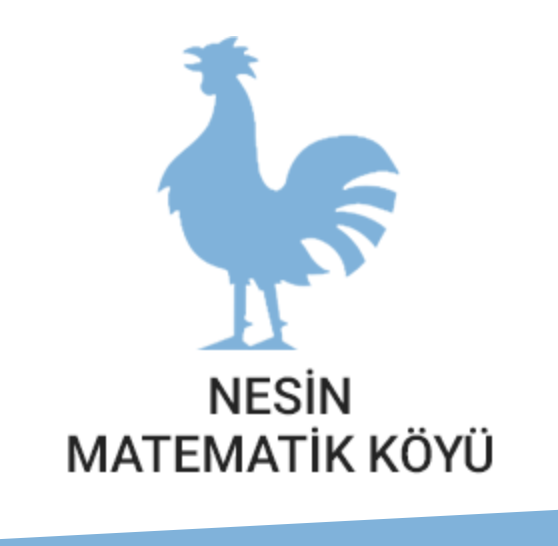16/01/2023 - 22/01/2023
Tarih:
16-22 Ocak 2023. (Köy'e geliş 15 Ocak, Köy'den ayrılış 22 Ocak'tır.)
Ücret:
Kampın ücreti, dört öğün yemek, konaklama, dersler ve her türlü temel ihtiyaçlar dahil 2.800 TL’dir. Koğuş konaklaması sağlanacaktır. Kimseyi ücret nedeniyle reddetmeme gibi değiştirilmesi bile önerilemeyecek bir ilkemiz vardı ve bu ilkemizle gurur duyuyorduk. 15 yıl boyunca sadık kaldığımız bu ilkemizi yıllar boyunca (utanarak ve üzülerek söylüyoruz) suistimal eden o kadar çok öğrenci oldu ki maalesef böyle bir söz vermenin toplumsal ahlak açısından doğru olmadığına inanmaya başladık. Nesin Matematik Köyü, kar amacı gütmemektedir (gütmesi de mümkün değildir zaten!) ve karşılıklı anlayış ve güven varsayılarak yönetilmektedir. İhtiyacı olan katılımcılara gerekli burs sağlanacaktır. Durumumuzu anlayacağınızı ve bütçenizin izin verdiği ölçüde kış kampımızı destekleyeceğinizi umuyoruz.
Kontenjan:
40 kişi.
İletişim Kişisi:
Ceren Aydın - cerenaydin@nesinkoyleri.org
Başvuru formuKayıt Uyarı:
Başvurunuz sisteme otomatik olarak aktarılacaktır. En geç üç gün içerisinde belirttiğiniz e-posta adresinize başvurunuzun ulaştığına dair bir onay mesajı gönderilecektir. Eğer onay mesajı almadıysanız, bir aksilik oldu demektir. E-posta yoluyla iletişime geçin lütfen (cerenaydin@nesinkoyleri.org). Başvurunuz kabul edildikten sonra verilen süre içerisinde kaydınızı yaptırmalısınız, sadece başvuru yapmak yetmemektedir.
Eğitimciler:
Program:
Title of the course: Variation formulae for submanifolds in Kähler and G2 geometry
Instructor’s Name: Prof. Dr. Tommaso Pacini
Institution: University of Torino
Prerequisites: Differential Geometry
Level: (Graduate, Advanced undergraduate)
Abstract: In any Riemannian manifold it is interesting to detect which submanifolds are minimal, i.e. critical points of the volume
functional, and to study their further properties. We shall discuss the first and second variation formulae in this general context, then
specialize them to the case of Lagrangian/coassociative submanifolds in special Riemannian situations: Kähler/G2 manifolds. We shall
develop the necessary concepts as we go along, starting with the simplest case of geodesics. An outline of these topics is provided in the following paper.
Language: English
Textbook or/and course webpage (not necessary): Pacini, Tommaso.
Variation formulae for the volume of coassociative submanifolds.
Available on the ArXiv at https://arxiv.org/abs/2207.13956
Title of the course: Introduction to the locally conformally Kähler (LCK) geometry
Instructor’s Name: Doç. Dr. Mustafa Kalafat
Institution: University of Bonn
Prerequisites: Differential Geometry
Level: Graduate, Advanced undergraduate.
Abstract: In these lectures we will make an introduction to the locally conformally Kähler (LCK) geometry.
A LCK metric is a structure on a complex manifold which falls somewhere between a Hermitian metric and a Kähler metric.
Ingredients of the lectures are as follows:
LCK 1: Introduction. Lee form. Torsion 1-form.
LCK 2: Weyl connection.
LCK 3: Relation with conformal structures: Hermite-Weyl structures
with vanishing distance curvature. (Complex dimension ≥ 3)
LCK 4: Globally conformally Kähler (GCK) manifolds.
LCK 5: Vaisman’s conjectures.
LCK 6: Curvature properties.
LCK 7: Blow up.
LCK 8: Adapted cohomology.
LCK 9: Examples. Hopf manifolds.
LCK 10: Inoue surfaces.
LCK 11: A Nilmanifold: Generalized Thurston’s manifold.
LCK 12: A 4-dimensional Solvmanifold.
LCK 13: SU(2)xS^1, non-compact examples.
LCK 14: Brieskorn & Van de Ven’s manifolds.
LCK 15: Generalized Hopf Manifolds.
Language: References, Textbook or/and course webpage (not necessary):
1. S. Dragomir, L. Ornea – Locally conformal Kähler geometry.
Progress in Mathematics, 155. Birkhäuser Boston, Inc., Boston, MA, 1998.
2. Vaisman, Izu. Some curvature properties of complex surfaces.
Ann. Mat. Pura Appl. (4) 132 (1982), 1–18 (1983).
3. Vaisman, Izu. On locally and globally conformal Kähler manifolds.
Trans. Amer. Math. Soc. 262 (1980), no. 2, 533–542.
4. Gauduchon, Paul. La 1-forme de torsion d’une variété hermitienne compacte.
[Torsion 1-forms of compact Hermitian manifolds] Math. Ann. 267
(1984), no. 4, 495–518.
Title of the course: Introduction to Elliptic Partial Differential Equations
Instructor: Ms. Buket Can Bahadır
Institution: METU
Prerequisites: Partial Differential Equations, Sobolev Spaces
Level (erase some): Graduate Advanced undergraduate
Abstract or a daily curriculum:
In this lecture series we want to examine uniformly elliptic second order partial differential equations. In order to solve these
equations we will take advantage of two different methods from analysis, namely, from Sobolev Spaces and maximum principle
techniques. The simplest non-trivial examples of elliptic PDEs are the Laplace Equation and the Poisson Equation. Any other elliptic PDE in
two variables can be expressed as a generalization of one of these equations. The general theory of solutions to Laplace’s equation is
known as potential theory, which is, in fact, the study of harmonic functions. So it is only natural to look at techniques from analysis
to solve these equations.
Daily description is as follows.
Elliptic PDEs 1: Definitions and Motivation.
Elliptic PDEs 2: Existence of Weak Solutions and Existence Theorems.
Elliptic PDEs 3: Existence of Weak Solutions and Existence Theorems (cont.).
Elliptic PDEs 4: Regularity.
Elliptic PDEs 5: Maximum Principles.
Elliptic PDEs 6: Eigenvalues and Eigenfunctions.
Textbook or/and course webpage:
1. Lawrence C. Evans – Partial Differential Equations: Second Edition
(Graduate Studies in Mathematics), American Mathematical Society,
1998.
2. Thomas Ransford, Potential Theory in the Complex Plane, Cambridge
University Press, 2010.
Language (erase 1 or none): EN/TR
E-mail address: canbuket@gmail.com
Title of the course: An introduction to Gauge theory and 4-manifolds
Title of the instructor: Professor
Instructor’s Name: Mohan Bhupal
Institution: METU – Middle East Technical University
Dates: 16-22 January
Prerequisites: Basic Topology
Level: Graduate, Advanced undergraduate
Abstract: We will begin, in this minicourse, by discussing the
classification of closed, simply connected topological 4-manifolds
given in the theorems of Whitehead and Freedman. We will then move on
to the question of the existence and classification of smooth
structures on 4-manifolds. A powerful tool for distinguishing smooth
structures on 4-manifolds is given by the Seiberg-Witten invariants.
These will be introduced without proofs and some computations on
elliptic surfaces will be given.
Textbook and References:
1. R. E. Gompf and A. I. Stipsicz, 4-Manifolds and Kirby Calculus,
Graduate Studies in Mathematics, Vol. 20, Amer. Math. Soc., RI, 1999.
2. A. Scorpan, The Wild World of 4-Manifolds, Amer. Math. Soc.,
Providence, RI, 2005.
3. R. Fintushel and R. Stern, Six lectures on four 4-manifolds, Low
dimensional topology, 265–315, IAS/Park City Math. Ser., 15, Amer.
Math. Soc., Providence, RI, 2009.

